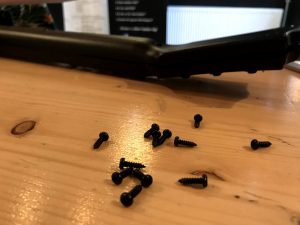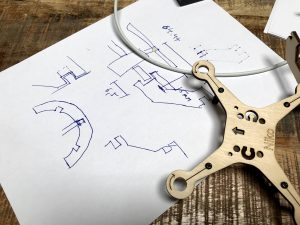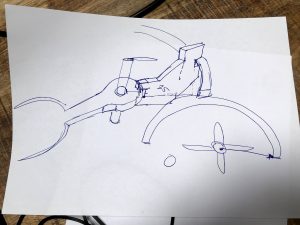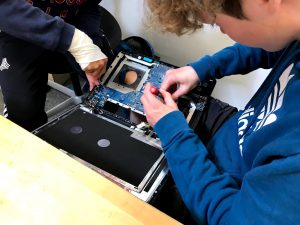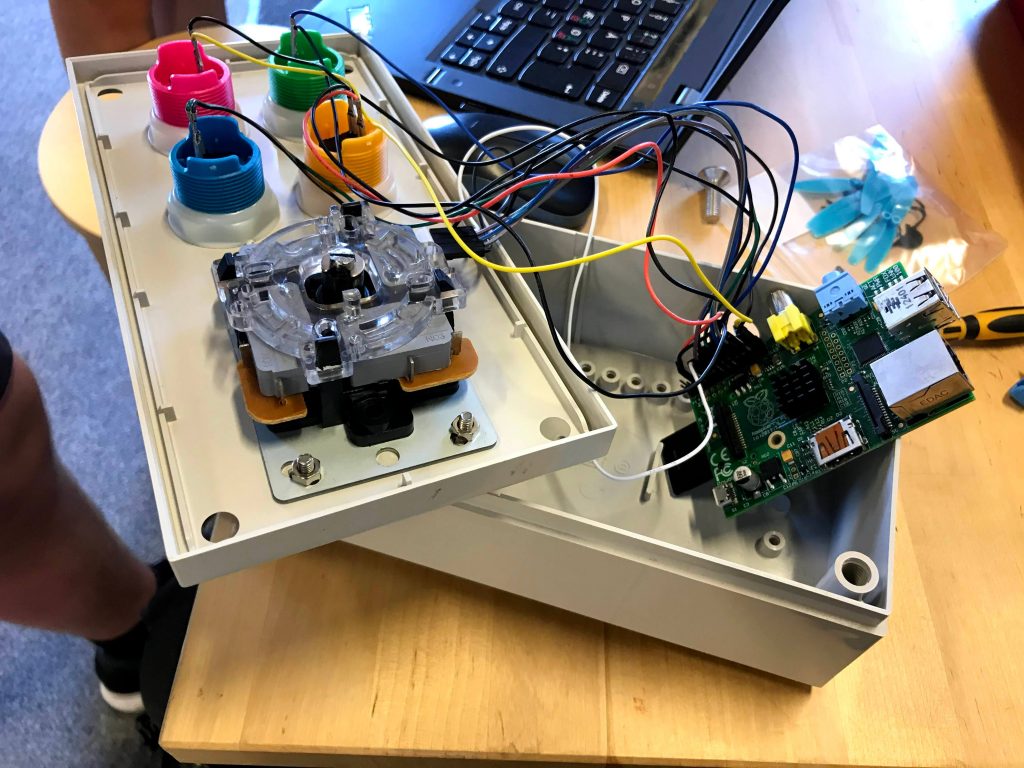
In the Data Age, where data is as valuable as oil in shaping our world, how can 21st-century schools prepare learners and educators to effectively navigate this reality?
The 21st-century school arrived over 20 years ago, a fact that the calendar does not allow us to contradict. This school finds in the challenges of today the need to promote an education for student protagonism, intellectual autonomy, environmental and social responsibility. These skills are increasingly necessary and valued for a holistic formation of the individual.
The discussion on the implementation of disruptive educational actions that break with the status quo is not recent. The American philosopher and pedagogue John Dewey (1858-1952) indicated the need for the school to be a space for the integral formation of the individual, incorporating theory and practice. Seymour Papert (1928-1016), a mathematician, educator, and computer scientist born in South Africa, highlighted that the role of the teacher is to create conditions for exploration and creativity, allowing learners to build and experiment with their ideas independently and express them through the use of digital technologies.
Brazilian educator and philosopher Paulo Freire (1921-1997) pointed out that education should provide the development of a critical reading of the world, promoting the freedom of the individual to have their own point of view about their reality. This approach is urgent in the Data Age due to the immense amount of information that is currently produced and made available by different media.
In this sense, Data Literacy connects the classroom with the reality that surrounds the learner, promoting a Data Culture, and making the individual fluent in this domain. The National Common Curricular Base (BNCC, 2018) highlights the importance of proposing initiatives in the school so that the student learns to work with data as a way to make good decisions and identify the veracity of information that circulates in society.
“Argue based on facts, data, and reliable information, to formulate, negotiate and defend ideas, viewpoints, and common decisions that respect and promote human rights, socio-environmental awareness, and responsible consumption at a local, regional, and global level, with an ethical stance in relation to the care of oneself, others, and the planet” (BNCC, 2018, p.9)
Thus, in the context in which our society is inserted, where discussions on the use of technologies such as Artificial Intelligence (AI), the Internet of Things (IoT), and Big Data intensify, the static classroom that does not dialogue with the constantly moving reality of the current world loses valuable learning insights.
The Value of Data
Considering that we live in a technological, connected, and networked society, one of the essential fuels to propel this society is data. Data plays a crucial role in the digital economy and in strategic decision-making. They are the raw material that drives innovation, allows the development of new technologies, and fuels AI.
According to Davenport (1998), data are observations about the state of the world. Analogously, they are considered as a set of raw facts from which conclusions can be drawn. British mathematician Clive Humby states that “Data is the new oil,” referring to the value that this asset possesses in the present. We live in the Data Age, and knowing how to deal with the power that this resource has to take actions based on facts is an important skill to be developed by every citizen.
However, raw data are like crude oil. To have value, oil needs to be refined, just as data need to be processed and analyzed to become useful and relevant information. Data Literacy plays a fundamental role in this process, enabling people to understand, interpret, and extract meaningful insights from data, allowing for more informed decision-making and a deeper understanding of the world around them.
According to the Massachusetts Institute of Technology (MIT), Data Literacy, also known as Data Fluency, refers to the ability to read, work with, analyze, and argue with data. Jordan Morrow (2021), considered a “guru” in Data Literacy, highlights that the ability to argue is directly related to communication with data, which is of great value when it comes to personal, interpersonal, and corporate processes.

Data Literacy Flow: Read, Work with, Analyze, and Communicate with Data
Data Literacy in Basic Education: Ethical Implications, Privacy, and Infodemic
The development of Data Fluency is a path that allows the school to insert itself meaningfully into its local, regional, and global reality, transforming the world into a constantly updated textbook full of relevant issues.
It is important to consider that an education that liberates promotes critical thinking and intellectual autonomy, empowering the learner to become a researcher and explorer of the world around them, essential skills in today’s society.
In curriculum activities in the area of Humanities and Social Sciences, Data Literacy provides, for example, the possibility of connecting the history of industrial revolutions to themes such as ethics and morality. This perspective allows important reflections on issues such as power, dominance, and politics in the digital age.
Furthermore, Mathematical Sciences, driven by Languages, Codes, and their Technologies, collaborate with the reading and analysis of information made available by the media, confronting them with open data from reliable sources. The search for these reliable sources is a crucial aspect explored by Data Literacy.
Some themes are prominent and important to be brought into the classroom, such as data privacy and the use of Apps and Social Networks, as well as debates on Artificial Intelligence and Fake News. These topics have a significant impact on our daily lives, and exploring them in school can empower students to develop a deeper, more critical, and conscious understanding of the dynamics and challenges present in these fields.
Apps: The discussion on the use of ordinary citizens’ personal data to gain market advantages is a recurring and important topic to be debated. In 2012, the New York Times magazine published a warning through the article called “How Companies Learn Your Secrets,” which mentioned how the American retailer Target used data analysis techniques from menstrual cycle apps to identify customers who were pregnant and target ads and offers related to baby products.
Cases like this are common because the careful reading of the terms and conditions of use of apps is not a culture among users, thus allowing their personal information to be collected and shared without full awareness of the potential risks and consequences involved.
Social Networks: A study conducted by researchers from Cambridge and Stanford, cited in an article by Revista Galileu (Galileu – O Globo, 2015), revealed that Facebook has a (surprising) ability to know a person based on their likes. According to the study, with every 10 likes, Facebook can understand the person better than a work colleague. With every 70 likes, Facebook surpasses even a friend or roommate in terms of knowledge. And with every 150 likes, Facebook proves to be more efficient than a relative in understanding the person in question.The documentary “The Great Hack,” released in 2019, exposed an investigation into the company Cambridge Analytica, revealing how it used Facebook data to influence the United States presidential elections in 2016 through targeted propaganda. This discovery raised questions about data protection and the manipulation of American citizens’ personal information for political advantages.
Artificial Intelligence: Joy Buolamwini, a postgraduate student at MIT, played a key role in the debate regarding flaws in artificial intelligence algorithms in the field of computer vision. During tests, Joy discovered that the algorithm, trained with biased data, did not correctly recognize the faces of black women. Faced with this discovery, she undertook a legal battle in American courts to highlight and prove the biases present in the data that fed these algorithms. The story can be checked in the documentary “Coded Bias” released in 2020.Joy Buolamwini’s struggle served as an important warning about the need to address and correct algorithmic biases to promote fairer and more equitable systems. The film also highlights the importance of Data Literacy and collective responsibility in the search for fairer and more ethical solutions in the use of these technologies. The case highlights the relevance of the human element in the Data Age.
Fake News: Another theme that converges with the reality of the society we live in is the Infodemic. This term was popularized by the World Health Organization (WHO) during the COVID-19 pandemic and is defined as “an excess of information, some accurate and some not, that makes it difficult to find reliable sources and trustworthy guidance when needed.” In this context, misinformation and false news (Fake News) emerge. To combat conspiracy theories and discourse wars, which use data manipulation and distortion of real information to create biased rhetorics, actions aimed at transparency, media education, and promotion of critical thinking are essential.
Data Literacy in Practice:
For the development of activities related to Data Literacy, it is essential to establish a meaningful and contextualized strategy through a methodology that is active, such as Project-Based Learning.
In this approach, the generating theme of the proposal can be a relevant local, regional, or global issue. It is extremely important that activities related to reading, working with, analyzing, and communicating with data are connected to the real world.
To become data literate, it is not necessary to have training in Data Science, but it is important to understand the four levels of data analysis: descriptive, diagnostic, predictive, and prescriptive analysis (Morrow, 2021).
Descriptive analysis: serves to describe the data, including relevant characteristics, qualities, and events – what happens;
Diagnostic analysis: identifies the nature of an issue or problem, examines symptoms, and seeks insights – why it happens;
Predictive analysis: announces a behavior in advance – what may/will happen;
Prescriptive analysis: suggests an appropriate solution to the potential behavior that was pointed out – what to do.
Furthermore, it is necessary to cultivate an emancipatory educational attitude characterized by curiosity, creativity, and critical thinking, recognizing that Data Literacy enhances the human element in the use of data. These attitudes are essential to identify biases and discriminations present in the technologies used in decision-making, as well as to promote analytical reflections on the information made available by the media. Such competence is relevant for the general public, students, educators, and public and private managers, assisting them in understanding and facing the challenges associated with the use of data and information in their respective areas of action.
On the path to creating a Data Culture, as a potentializing agent for discussions related to current themes, Data Literacy can follow different structures. To begin, for example, it is important to organize with the participants a data dictionary, creating a glossary that describes the variables and terms used.
Likewise, it is relevant to define the theme, identifying a problem or situation that one wishes to explore.
In this sense, it is suggested that the learner develops the following skills:
1. Reflect and ask good questions: Think critically about the data and formulate relevant questions.
2. Handle the data: Prepare the data for analysis. This may involve cleaning and transforming the data, such as dealing with missing values, removing duplicates, standardizing formats, normalizing scales, among other procedures.
3. Analyze and find insights: Use visualizations and analysis techniques to understand the data and obtain insights.
4. Communicate and argue with data: Communicate findings clearly and persuasively, using visualizations and reports.
5. Ethics and data legislation: Consider the ethical and legal issues related to data, including privacy and compliance with regulations.
Tools: Free tools, such as Google Sheets and Google Data Studio, can be used complementarily, offering powerful resources for classroom actions, and collaborate in the promotion of multidisciplinary, active, and meaningful activities.
Data Literacy, Generating Themes, and Applications
The Generating Themes (Freire, 1971) are important elements for Data Literacy activities to be carried out, which can be local, regional, or global issues. For this purpose, the Sustainable Development Goals (SDGs) are a potent source of inspiration.
The 2030 Agenda for Sustainable Development (UN BRAZIL, 2022) is characterized by “a global call to action to end poverty, protect the environment and the climate, and ensure that people everywhere can enjoy peace and prosperity.” Below are some examples of data analysis applications to promote reflection on the SDGs, dialoguing with the school curriculum through active methodologies.

Educational Robotics and Natural Sciences: By using sensors from electronic platforms such as Arduino and GoGo Board, students can collect relevant environmental data for the natural sciences, such as soil moisture, air humidity, air quality, and atmospheric pressure.
This data collection enables the investigation of natural phenomena, exploration of the interactions between environmental elements, and analysis of patterns and relationships. Furthermore, students can create practical solutions to environmental challenges (SDG 13), using automation and prototyping to develop customized devices and solution projects.
These activities promote interest in science, develop scientific skills, and provide a deeper understanding of the natural world.
Government Open Data and Languages: The concept of Open Data is not widely known by the general population, but it is an important topic to be addressed in the classroom and is a potent source for developing interpretation and argumentation skills.
Open Data is defined as “a methodology for publishing government data in reusable formats, aiming to increase transparency and promote greater political participation by citizens”. Institutions such as the Chamber of Deputies, the Senate, the Brazilian Institute of Geography and Statistics (IBGE), and the Ministry of Health are examples of bodies that make their data available openly.
For example, as mentioned above, an activity with the theme “Fires in the Pantanal” can be debated using data from the National Institute for Space Research (INPE) and comparing it with news released by the media. In this way, it is possible to promote debates and relevant insights in the classroom to discuss combating fake news and raising awareness of the importance of preserving biomes (SDG 15).
These activities allow students to explore the importance of critical analysis of information, understanding of data, and evaluation of the reliability of sources.
Primary Research and Humanities and Social Sciences: By conducting primary research, such as surveys, interviews, and focus groups in their own school, students have the opportunity to address relevant themes for the school community and promote meaningful reflections.
Themes such as school infrastructure, bullying, gender issues, and improvements in the teaching and learning process can be explored by the students themselves, resulting in valuable contributions to improve the quality of education (SDG 4).
These research projects enable students to actively engage in data collection, analyze the responses obtained, and draw conclusions based on their own experiences. By involving students in this process, the school promotes active participation of students, encouraging student protagonism, critical thinking, and the ability to express their opinions and concerns.
Conclusion
Data Literacy for Data Fluency is essential in 21st-century education and plays a fundamental role in emancipatory education. By empowering students to understand, interpret, and communicate data meaningfully, it prepares students to face the challenges and seize the opportunities offered by the Data Age.
Through Data Literacy, students develop skills in reading, analyzing, and communicating with data, becoming critical thinkers and informed decision-makers. These skills are essential in the present, where the ability to collect, analyze, and act based on data is crucial for success.
The integration of Data Literacy can occur in a multidisciplinary manner, through contextualized approaches, enabling students to apply these skills in different areas of knowledge. Moreover, the use of free tools such as Google Sheets and Google Data Studio enhances learning, making activities more engaging and practical.
Thus, Data Literacy, coupled with emancipatory education, empowers students to face the challenges of the current world, explore opportunities, and make data-based decisions.
References
BRAZIL. Ministry of Education. “National Common Curricular Base”. Brasília: MEC, 2018.
Davenport, Thomas H. “Information Ecology: Why technology is not enough for success in the information age”, 1998.
Freire, Paulo. “Pedagogy of the Oppressed”, 1971
Galastri, Luciana. “Facebook knows you better than your mother – and only needs to analyze 150 of your ‘likes’ for that.” O Globo – Revista Galileu, Jan 14, 2015,revistagalileu.globo.com/Tecnologia/Internet/noticia/2015/01/o-facebook-te-conhece-melhor-do-que-sua-mae-e-so-precisa-analisar-150-de-seus-curtir-para-isso.html. Accessed on: Jul 9, 2023.
Morrow, Jordan. “Be data literate: The data literacy skills everyone needs to succeed”. Kogan Page Publishers, 2021.
UN BRAZIL. “The Sustainable Development Goals in Brazil”. United Nations Brazil. 2022. Available at: https://brasil.un.org/pt-br/sdgs. Accessed on: Jul 8, 2023.

 llaborate to build, test, refine, and see the direct results of their changes.
llaborate to build, test, refine, and see the direct results of their changes. Designing modules taps into shape, pattern, and a sense of visual balance. Can students create elements that are both functional and aesthetically pleasing?
Designing modules taps into shape, pattern, and a sense of visual balance. Can students create elements that are both functional and aesthetically pleasing?














 Digital Fabrication in Education – Empowering Math Classes with an Active and Meaningful Approach
Digital Fabrication in Education – Empowering Math Classes with an Active and Meaningful Approach










 Cynthia Solomon, co-creator of Logo and pioneer of technology in education
Cynthia Solomon, co-creator of Logo and pioneer of technology in education







